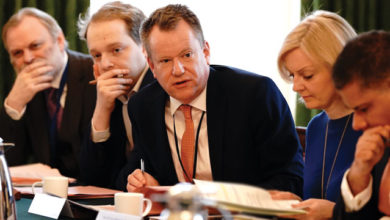Brexit and health

An EU scheme which facilitated over £50 million worth of cross-border healthcare has not been replaced post-Brexit, narrowing the options for UK patients.
The Cross-Border Healthcare Directive (CBHD), a scheme which facilitates EU patients to access treatment in most member states and claim back costs, has closed for UK patients and also means that EU patients can no longer use the CBHD to access health in the UK.
The scheme was popular because it enabled reimbursement for both private and state-funded treatments, with figures for the five years before the end of the Brexit transition in 31 December 2020 showing over £50 million reimbursed in Northern Ireland and the Republic of Ireland.
The end of the transition means that UK patients are no longer permitted to submit applications for treatment costs, additionally Irish patients can no longer use the CBHD to access healthcare in the UK.
In response, the Irish Government set up a temporary scheme for residents seeking treatment in Northern Ireland, however, the scheme has only been given a lifespan of one year.
The Northern Ireland Planned Healthcare Scheme is unilateral and was introduced on 1 January 2021. It means that patients from the Republic can access some private healthcare treatments in Northern Ireland and apply to be reimbursed. A long-term solution has yet to be identified.
The Trade and Cooperation Agreement signed by the EU and UK in December 2020 recommitted to the Common Travel Area a long-standing agreement which means that Irish and UK residents can live, work and access public services in each other’s jurisdictions.
Figures gathered by the BBC show that Ireland’s health service reimbursed 16,500 applications through CBHD in the past five years, at a cost of around £40 million. Of these, over 95 per cent were requested for treatment in Northern Ireland.
For the same time period, Northern Ireland’s Health and Social Care Board spent £14 million reimbursing Northern Ireland patients for treatment in the EU, including in the Republic of Ireland.
While the scheme is now closed to UK patients, some avenues still remain open for UK patients to access healthcare in European countries, however, the option of choosing private healthcare, offered by CBHD, is no longer available.
The Trade and Cooperation Agreement included the S2, meaning Northern Ireland patients can apply for public health treatment in any of the 27 EU member states. However, the treatment must be available in both the patient’s own country and a number of conditions, including consultant approval, are required.
Consultants can also recommend transferring a patient outside of Northern Ireland if their care is unavailable locally, however, it is not possible for patients to arrange care themselves.
In April, the Northern Ireland Assembly’s Health Committee heard evidence from the Department of Health in relation to Brexit. The Committee Chair, Colm Gildernew MLA, raised a question on reciprocal healthcare and the cross-border directive, stating that he was witness to large numbers of people being impacted.
“I understand that the legacy cases are still being dealt with and that there are some short-term reciprocal arrangements between here and the 26 counties. However, other parts of Europe were a significant outlet, and, given our waiting list situation, is the current situation not a disaster and should it not be a priority to get an urgent replacement for the cross-border directive?” he asked.
A spokesperson for the Department responded: “The cross-border healthcare directive was an additional provision, which was available when we were part of the European Union. Options are being given to the Minister as to whether those provisions can be continued. I have to wait for his decision on the options that he has been given.”
Asked when the Department expected a decision from the Minister, a representative responded: “Very shortly. I was waiting for legal advice, which I received this morning. That will go to the Minister this week.”





